I made a conscious decision during power system upgrade to have a single battery bank of 3x Firefly 100 amp hour batteries for both my house and starting needs on Grace. Space on any sailboat, including mine, is always limited. Adding a third battery, and upsizing them all on top of that, left little room for a dedicated starting battery. I had run Jammy this way for many years and had been much happier having the extra amp hours to use for house loads.
However this means that I could face the dreaded situation of having house loads deplete the bank enough that I could not start the engine. With my system, I have so much instrumentation – MasterVolt panel and alarms, Balmar panel and alarms, iKommunicate and SignalK monitoring, and displays at the nav table, on my phone, and of course alarms and displays at my MFD – that it would be unlikely that I wouldn’t know when we reached a critical point, and be able to take action.
Nevertheless, I believe in being prepared for every eventuality or emergency while on the water. Say, perhaps, silencing all of the alarms after a late night with cocktails, and falling asleep while the batteries happily discharge away to 0…
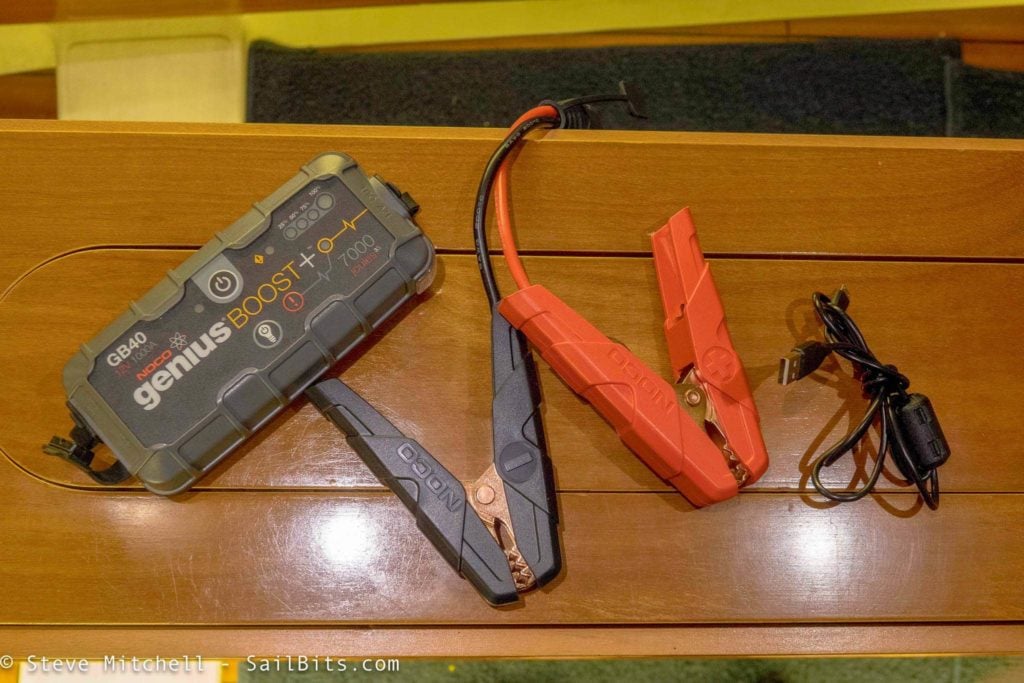
I carry a NOCO Genius Boost jump starter to ensure I won’t end up dead in the water. Lithium battery technology has resulted in a super compact package that gives me around 20 chances to start even if my entire battery bank is dead.
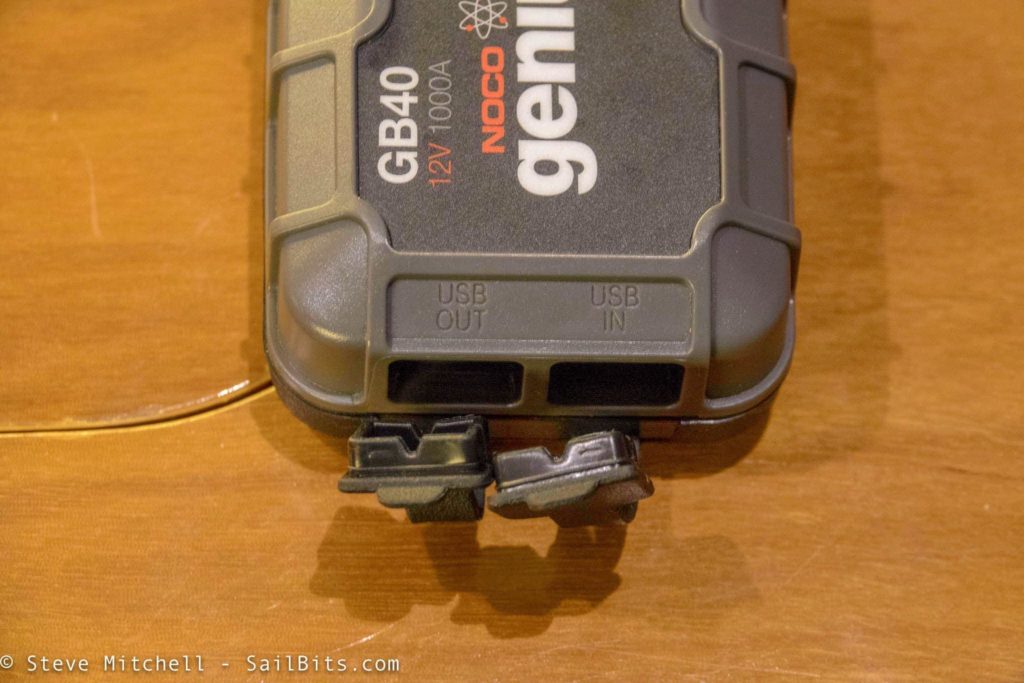
It charges off of a standard 5V USB connection, which I have plenty of as a result of adding a bunch throughout the boat. It does take some time to charge it back up once depleted. It also has a USB 5V out port to charge up your electronics, and a handy light to help you find your battery in the dark, in case the power is completely out.
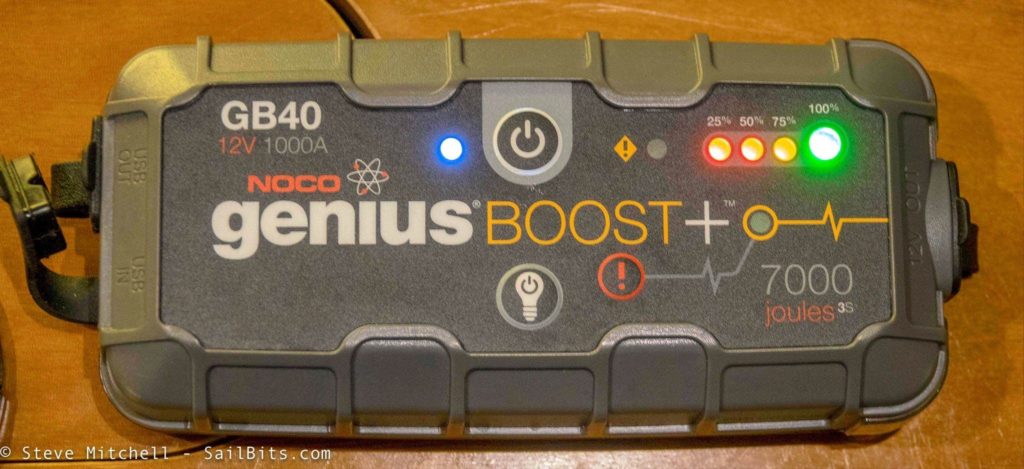
It is pretty easy to use as well – push the power button to turn it on, and you’ll see how much capacity you have as shown by the LEDs in the upper right. Once you connect the leads and get them on the battery terminals, press and hold the red exclamation until the light in between the heartbeat symbols comes on, and you’re ready to try starting.
If you do need to use it for a full jump start, they warn not to crank forever off of it – small tries with pauses in between so things can recover.
I’ve even used it in a pinch when I needed a 12v power supply dock-side to do some pumping of a flooded dinghy for a neighbor.
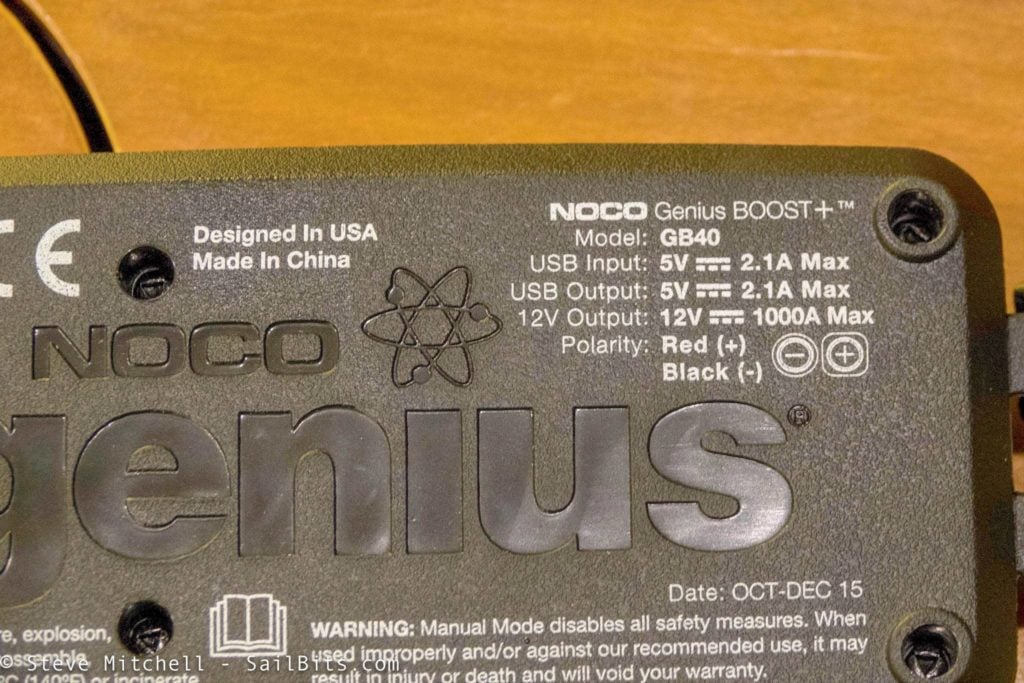
I tested it by completely depleting my entire battery bank (which I wanted to do for other reasons) and then using it to crank over a cold engine, in winter, after not having used the boat for over a week. It usually takes a bit longer to start that way, but I didn’t notice any additional delay when using the NOCO. The engine fired up after it gave it a jolt, and once the engine was running, my 100 amp Balmar alternator kicked in and started charging the house bank.
I find it amazing that this tiny little box can output 12V at a 1000A max!
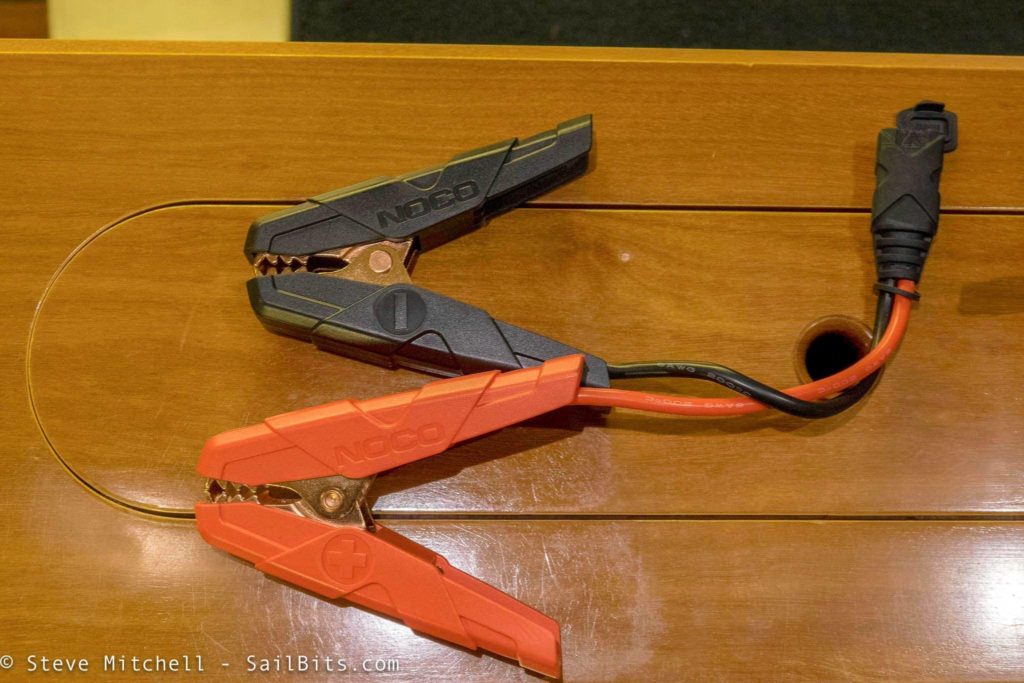
The battery clamps are well made and have good strong springs, and a connector that can’t be messed up when connecting it to the unit.
I started carrying one of these in my car a years ago, and 3 years ago I added one to my boat toolkit and highly recommend every sailor does as well. They are no bigger than an average sized book, stay charged for a long time, and can provide peace of mind if you have a battery issue while on the water.
Archived Comments
These are read only comments from the old system. Scroll down to participate in SeaBits Discussions, our new interactive forum attached to each article.
Timothy Grady
March 2, 2018 at 2:35 am
But…but…but…it says not recommended for diesels. You can’t do that. Well, maybe you can and I guess you did.
Do you know what the down side is for these units to start a diesel? Does the battery get ‘warm’ ?
Timothy Grady
March 2, 2018 at 9:54 pm
Never mind. The advertisement for the 1000 watt system says it is good for up to a 3 liter diesel.
DLM
June 26, 2020 at 2:33 pm
I have one of these, but now I am wondering how to make sure it stays charged. Do you leave it plugged in? Or do you try to remember to check and charge it periodically? Knowing me, I would probably forget to check, and it would be dead the one time that I really need it!
James
August 1, 2021 at 11:42 am
Don’t get into the habit of holding the emergency override button for normal starts. It disables all sorts of safety protection. You only use that if your battery is so depleted that the unit can’t detect your battery.

